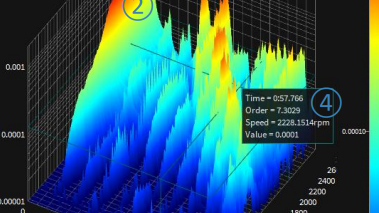Latest Oxygen 7.6 Update
Voltage Measurements
Voltage measurement inputs are fundamental component of power analyzers. They enable the measurement of voltage in an electrical system by converting electrical signals into usable data. Voltage measurement inputs are designed to measure AC or DC voltage levels. Modern power analyser voltage inputs measure up to 1kV RMS / 2 kV peak or external voltage sensors can be used. Choosing the appropriate voltage input depends on the application and the range of voltage to be measured.
Current Sensors
Current sensors are fundamental components of power analyzers. They enable the measurement of current flowing in an electrical system by converting electrical signals into usable data. Current sensors determine the magnitude and direction of electrical current. These sensors come in various forms, including current transformers, Zeroflux current transducers, Rogowski coils, and Hall effect sensors. Choosing the appropriate sensor type depends on the application and the range of current to be measured.
Data Acquisition System
The data acquisition system is responsible for capturing and digitizing the signals from the voltage inputs and current sensors. It converts analogue data into digital format for further processing and analysis. This unit often consists of an analogue-to-digital converter (ADC) that samples the input signals at a high frequency to ensure accurate representation. Additionally, the data acquisition unit may include signal conditioning circuits to enhance the quality of the acquired data and protect the measurement system from external interference.
Signal Processing and Calculation
Once the analogue signals are converted into digital format, the power analyzer system performs various signal processing techniques to extract useful information. Signal processing algorithms are employed to calculate power parameters such as RMS voltage and current, active power, reactive power, apparent power, fundamental frequency, power factor, harmonics, total harmonic distortion, voltage and current unbalance. Power parameters can be calculated for DC and AC systems, single and multi phase. These calculations involve complex mathematical operations, including Fourier transforms, digital filters, and vector analysis. The accuracy and speed of the signal processing greatly influence the reliability and responsiveness of the power analyzer system.
Display and User Interface
Power analyzers feature a user-friendly interface that allows operators to interact with the system and visualize the measurement results. This interface typically includes a display screen and navigation controls. The display presents real-time measurements, waveforms, and graphical representations of power parameters. Additionally, the user interface enables configuration of measurement settings, selection of display modes, and access to advanced analysis functions.
Communication Interfaces
Modern power analyzer systems often incorporate various communication interfaces to facilitate data transfer and integration with external devices or software. These interfaces include EtherCAT, CAN, Ethernet and USB. By utilizing these interfaces, power analyzers can transmit measurement data to a computer for further analysis, connect with other test equipment, or integrate into a larger networked system.
Data Analysis Software
To make the most of the collected measurement data, power analyzer systems often provide dedicated software for in-depth analysis and reporting. This software allows users to visualize long-term trends, perform statistical analysis, generate custom reports, and export data in various formats. Advanced analysis features may include power quality assessment, energy consumption profiling, compliance testing based on industry standards, efficiency measurement, efficiency mapping, DQ analysis, flicker analysis. The data analysis software greatly enhances the usability and value of power analyzer systems.
System Expansion
As well as voltage and current inputs, modern power analysers can measure parameters including speed and torque for mechanical power measurement. This can be used for system or drivetrain efficiency measurement. In addition, modern power analysers can measure vibration and temperature. Speed, angle and vibration are used for order analysis of rotating machinery. Measuring these additional parameters in the same system can streamline the testing and data analysis process.
Conclusion
Power analyzers consist of several essential components that work together to provide accurate measurements and insightful analysis of electrical power parameters. From voltage measurement inputs and current sensors to data acquisition units, signal processing algorithms, user interfaces, and communication interfaces, data analysis software, additional inputs, each component plays a critical role in ensuring reliable and precise measurements. By understanding these components, users can effectively leverage power analyzers for improved energy management, equipment performance optimization, and troubleshooting in a wide range of applications.
Download a PDF copy of this blog here.




